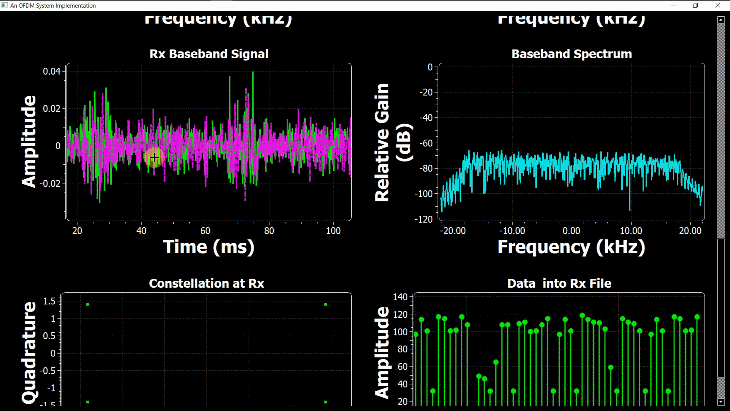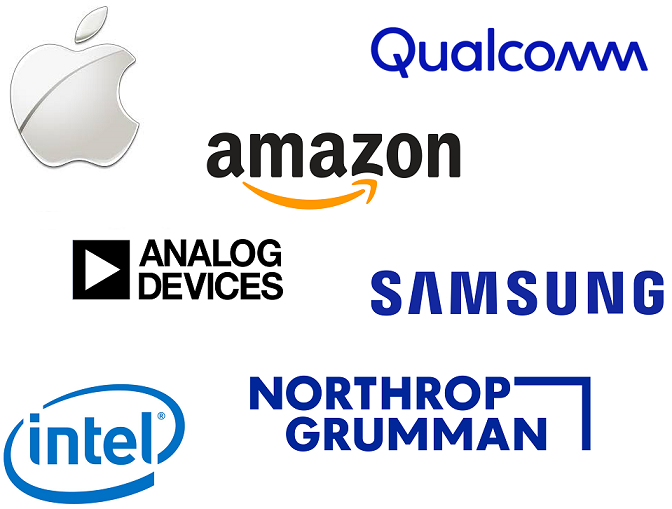The first commercial cellular network was launched in Japan in 1979 and quickly proliferated in the rest of the world afterwards (that is what cells do). Very few people were able to visualize the oncoming revolution and the network was not even called 1G at that time. It made perfect sense for James Cameron to think of a future world where humans and machines will be fighting wars with machine guns. With the benefit of hindsight today, we know that this will never happen. The electronic side (the brain) of the technology has left its mechanical counterpart (the body) in the dust.

The advancements in Gs has given rise to an increasingly connected world that is being taken to a new level by the 5G standard. With the Internet of Everything, smart grids, autonomous vehicles and transportation systems, financial and trading centers, or the security systems, information is constantly traveling in all directions across the globe at an unprecedented rate. It seems that everything that can be connected and automated will be connected and automated while complete ecosystems are being built on these oceans of information. It is possible to soon find ourselves living in a world where the symbolic butterfly flapping its wings in India can actually cause hurricanes in the United States. What will an antagonist Artificial Intelligence of the future need to bring the world to a halt and humans to their knees? Practically nothing. We would already have relinquished too much control, no machine guns required.
This connectivity is linked to information consumption in a feedback loop. A large part of this information consuming behavior can be traced back to the ubiquitous wireless communication systems, what radio pioneer Lee De Forest called ”an Invisible Empire of the Air, intangible, yet solid as granite”. The roadblocks encountered on the growth curve of this invisible empire have consistently been overcome through invention of new technologies. These are the technologies you will learn about in this text that form the backbone of the physical layer (PHY) of 5G cellular systems.
The readers of my earlier book Wireless Communications from the Ground Up – An SDR Perspective know that a good explanation contains the following three features in my opinion: Lots of visualizations, easy mathematics and intuitive reasonings.
1. Visualization

In writing this book too, I focused on explaining the ideas through many figures which I hope are reasonably beautiful. Authors usually write the text and then draw figures. Since I learn the concepts through images in my mind, I draw a figure first and then explain it in the text. A figure imprints a massive amount of parallel information in our brains that is much easier to process and recall later because the memory is formed through the images, not the words.
2. Easy Mathematics
The mathematics part was a challenge because multiple antenna or MIMO systems are inherently tied up with matrices and linear algebra. I solved this problem through explaining a scalar case and then generalizing it to a matrix expression in the end. This approach kept this book clear of heavy matrix formulations. Also, at very few places where I used $e$ and $j$ to convey the concept, I confined them to a dedicated box that can be skipped without any discontinuity in exposition. Finally, some derivations have been given in appendices for interested readers in a small font.
3. Intuitive Explanations
Most topics contain an intuitive description that makes them easier to understand. This is how a human mind works. For example, if I show you a number 1202, you will forget it in a few minutes. But with extra information that this number is the year 2021 in reverse, you will remember it for a long time. The link between 1202 and 2021 will keep the memory alive and correct. Once you see that intuition along with the respective figures in the eBook, it will be difficult to unlearn the concepts.
+ Bonus
An extra little bonus is a one page summary of the general direction of development in 5G cellular systems (in addition to one page of figures, it spans an extra page for a short and relevant description). A reader can see the big picture of the techniques employed and can also extrapolate the trends for future wireless networks. My promise: this one-page summary will delight your heart.
Table of Contents
See the table of contents below or here.
Preface
1 Linking Data to Signals
1.1 The Big Picture
1.2 Complex Signals
1.3 Basics of Digital Communication
1.4 Quadrature Amplitude Modulation (QAM)
1.5 Appendix
2 Signal Transmission in a Wireless Channel
2.1 Large-Scale Fading
2.2 Small-Scale Fading
2.3 Diversity: A Dumb yet Clever Idea
2.3.1 The Anna Karenina Principle
2.3.2 The Inverse Anna Karenina Principle
2.3.3 Types of Diversity
2.4 Multiple Antenna Modes
3 Beamforming Demystified
3.1 Signal Model
3.2 Viewing Multiple Antennas through a Different Lens
3.3 Classical or Physical Beamforming
3.3.1 Superposition of Waveforms
3.3.2 Array Gain
3.3.3 The Origin of Beams
3.3.4 Beam Steering
3.4 Generalized or Virtual Beamforming
3.4.1 Maximum Ratio Combining (MRC)
3.4.2 Array Gain vs Diversity Gain
3.4.3 Maximum Ratio Transmission (MRT)
3.4.4 Precoding and Combining
3.5 The Small Picture
3.6 Appendix
4 Massive MIMO
4.1 Multi-User MIMO
4.2 Massive MIMO
4.3 Detection Algorithms
4.3.1 Spatial Matched Filtering (Maximum Ratio)
4.3.2 Zero-Forcing (ZF)
4.4 Acquiring Channel State Information (CSI)
4.5 Pilot Contamination
4.6 The Small Picture
5 Spatial Multiplexing
5.1 From Multi-User MIMO to a Single-User MIMO
5.2 Detection with Tx Channel Knowledge
5.3 Detection with no Tx Channel Knowledge
5.3.1 Linear Detection
5.3.2 Successive Interference Cancellation
5.3.3 The Algorithm from a Clever Horse
6 Millimeter Wave (mmWave) Communication
6.1 Channel Propagation
6.2 Analog, Digital and Hybrid Beamforming
6.3 mmWave Massive MIMO
6.4 The Small Picture
7 Low Density Parity Check (LDPC) Codes
7.1 Encoding
7.2 Decoding
7.3 The Small Picture
8 Orthogonal Frequency Division Multiplexing (OFDM)
8.1 From the Printer Port
8.2 To a Sliced Bread
8.3 Why CP-OFDM?
8.4 Sub-Carrier Spacing (SCS)
8.5 DFT-Precoded OFDM
8.6 The Small Picture
One Page Summary
Bibligraphy
Target Audience
As the technology advances, two trends appear in any field. The science becomes more complicated after the low hanging fruit is picked up and hence only a few can master it. But if this technology has a real impact on our everyday lives (which the wireless systems do), the general public also gets interested in learning the fundamentals. In today’s world, this diverse knowledge proves to be the critical edge. I have bridged this gap between the experts who are designing the systems and the learners who are eager to make sense of it. The target audience is the people who are interested in technology in general.
Customer Testimonials
I have been working as part of the Application Engineering team at Intel enabling the 2G/3G/LTE/5G customers on the RAN Transport for the last 20 years. Around 18 months ago, I had to switch from the packet-processing domain to the 5GNR L1 signal processing side and I was totally clueless. I have a computer science background with no prior knowledge of electronics and communications, but I needed to understand L1 algorithm development to get my job done.
So I read through many articles, books and videos but never got the whole picture. Your book really helped me understand the crux of the subject matter. Throughout the book, simple analogies are used to explain difficult concepts that makes it an easy read. There are plenty of resources explaining the "What" and the "How" part of the 5G-PHY, but this is the only book that explains the "Why" part, i.e. why things are done in a certain way. Thank you from the bottom of my heart.
Amol Patel, Sr. PAE Manager (APAC), Intel
The author has a depth of knowledge on wireless communications from the simplest elementary to the most complex topics that he covers in great and understandable details for someone not completely familiar with wireless. The chapters on (1) Beamforming, (2) MIMO, (3) OFDM and finally a coverage of (4) LDPC codes were excellent reads IMHO. I especially loved the LDPC chapter. The explanations are excellent. I purchased the book both electronically and in paper format. I also took the course the author provides – altogether it forms a really well rounded package for a moderately knowledgeable person with some physics and comms basis. Thank you and nice job.
S N-Mir, ASML, San Diego, USA
It is a well written book suited to both undergraduate and graduate levels. I like the analogies the author provides which makes it easy to connect with the concepts. The structure and the contents are also quite well organized.
Surendra Raju, Morse Micro, Australia
An example screenshot from the book is shown below (click on the image to enlarge it). Notice how using many figures really enables the reader to see things up close.
The complete package contains 700+ figures which are placed at regular intervals keeping in mind the sampling theorem in DSP, i.e., a reader can miss the text and still connect the figures to form the concept up to a reasonable extent.
| Basic | Complete |
| 8-Chapter 5G eBook (PDF) | 8-Chapter 5G eBook (PDF) |
| SDR course (videos) | |
| Original slides | |
| 50 GNU Radio Companion (GRC) exercises | |
| Over-the-air transmission project | |
| 10-Chapter Wireless Communications eBook (PDF) |
** Holiday season sale.
How would you feel sending and receiving a text and image file over the air? This becomes possible with an included GNU Radio example of a real OFDM system (the main 5G waveform) if you buy the complete option that includes the SDR course. Since SDR hardware is usually expensive, a USB sound card can be employed to transmit and receive signal through the speakers and microphone, respectively. See a short demo of the received signal in a wireless setting below.

 and many more.
and many more.
Frequently Asked Questions
Q. Will I get a receipt for company reimbursement?
A. Yes. A default email is sent with the purchase details. However, a separate payment receipt can also be given on request.
Q. Is this eBook a collection of 5G New Radio (NR) specifications?
A. No. This eBook explains the signal processing concepts behind 5G Physical Layer. You will be able to understand how a particular technology (e.g., beamforming, massive MIMO, LDPC codes, etc.) works so well to warrant its inclusion in NR standard.
Q. Is a paperback version of this book available?
A. No. Only a PDF version is available for purchase on this website.
